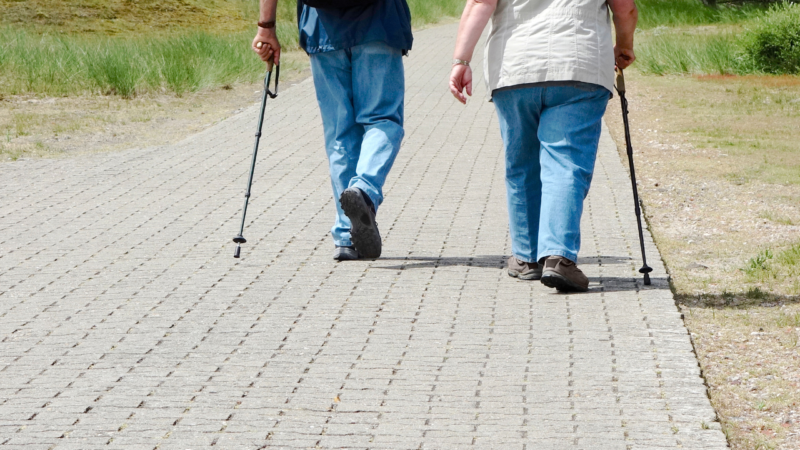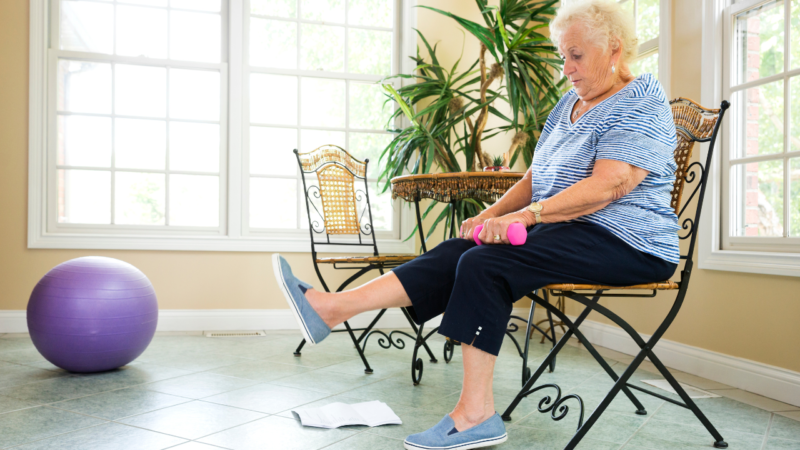When you start a new exercise class or join a gym you will often be asked about your blood pressure. You may be thinking why does this question always come up?
The main reason is that blood pressure (BP) is a reasonable indicator of overall heart health.
Additionally, if you have high or low blood pressure it may predispose you to experience certain symptoms while you exercise. This information is important for your instructor to know so they can be aware of it and adjust your program as needed.
In this article we will explore what blood pressure is, common blood pressure readings, how exercise affects blood pressure and how medications for BP can impact exercise. Let’s get into it!
What is blood pressure?
Blood pressure is the pressure of your blood on the walls of your arteries as your heart pumps it around your body. Your blood pressure goes up and down naturally throughout the day depending on what you are doing.
When your blood pressure is measured you will get a reading with 2 numbers that are written with one on top and one below such as 120/80mmHg.
The top number is your systolic blood pressure (the amount of pressure in your arteries when your heart beats). The bottom number is your diastolic blood pressure (the pressure when your heart muscle is between beats).
What is a normal blood pressure reading?
Normally during exercise, blood pressure increases to push the flow of oxygen-rich blood throughout the body. Blood vessels dilate and become less stiff as your heart beats faster and harder.
The vessels stretch and accommodate the excess pressure to keep blood pressure under control. So, exercise has a counterbalancing impact. During exercise, the heart pumps harder and blood pressure rises.
It may be normal for systolic blood pressure (top number) to reach up to 160-220mm Hg during exercise. However, extreme spikes or drops in blood pressure should be investigated as they could indicate an underlying medical condition.
In general, however, blood pressure returns to normal within several hours of a workout. You may even find it lowers slightly within a few hours of exercise. This is because blood will tend to pool in the extremities.
Different factors influence how your body responds to exercise. These factors can include diet, medical conditions, and medications.
Exercising with high or low blood pressure
Exercise can be a great way to help treat both hypotension and hypertension, as it helps improve blood circulation and maintain a healthy blood pressure.
Before you start a new exercise program, it’s a good idea to check with your doctor or physiotherapist so they can monitor your blood pressure and make you aware of any things to watch for whilst exercising.
Low blood pressure or a sudden drop in blood pressure can cause dizziness and fainting. In extreme cases of prolonged low BP the brain and other organs do not get the oxygen they need which can be life-threatening.
If you do have low BP or are predisposed to it, try choosing moderate activities that don’t involve bending and rising quickly to an upright position. Watch out for symptoms such as dizziness, blurred vision, and nausea.
High blood pressure places extra strain on the blood vessels, heart and other organs in the body. Persistent high blood pressure can increase your risk of serious and life-threatening conditions such as heart attacks and stroke.

Most of the time it is safe to exercise if have, or are at risk of, high blood pressure (hypertension). In fact, regular exercise can help you keep your blood pressure in check.
When exercising with high blood pressure, watch for symptoms such as headache, dizziness, shortness of breath and palpitations and choose moderate activities, slowly building up to daily exercise.
If you’re concerned about your blood pressure, you can monitor it before, during, and after your workout with a portable BP monitor.
Medications for blood pressure and exercise
Many people control their blood pressure through medication, but it is important to be aware that some medications can interfere with certain aspects of an exercise program.
Some may prevent your heart rate from increasing to your goal heart rate for your exercise. Other medications may lead to an increased risk of dehydration if you are participating in high-intensity workouts and not drinking adequate fluids. So it’s important to know what medications you are taking and their effects.
Becoming more active can lower both your top and bottom blood pressure numbers.
If you take blood pressure drugs and recently increased your activity level, make sure to keep monitoring your BP as your doctor may need to adjust your dose if there are changes. For some people, getting more exercise reduces their need for blood pressure medication.
Regular exercise also helps you maintain a healthy weight — another important way to control blood pressure. Losing even 2kg can lower your blood pressure if you’re overweight.
To keep your blood pressure healthy, you need to keep exercising regularly. It takes about one to three months for regular exercise to have an impact on your blood pressure.
If you would like to develop an exercise program to help manage your blood pressure, please reach out to our experienced team physiotherapists at The Physio Co. You can do this by calling our support office on 1300 797 793 or emailing [email protected].
Article written by Katie Jenkins, TPC Physiotherapist

 1300 797 793
1300 797 793
